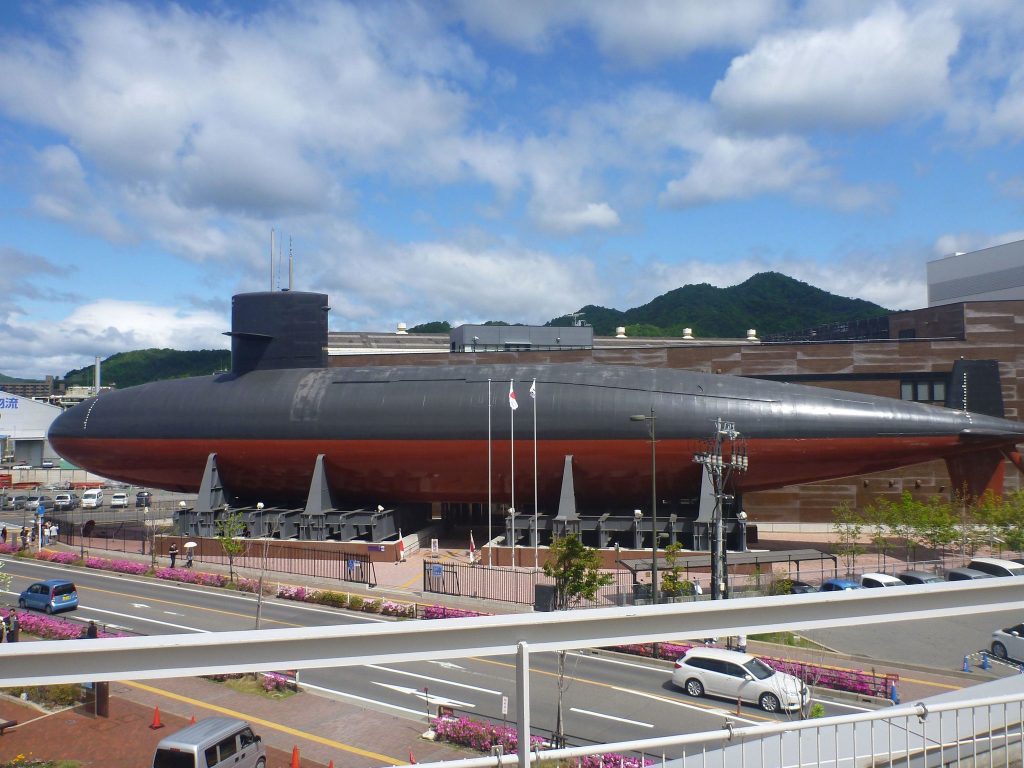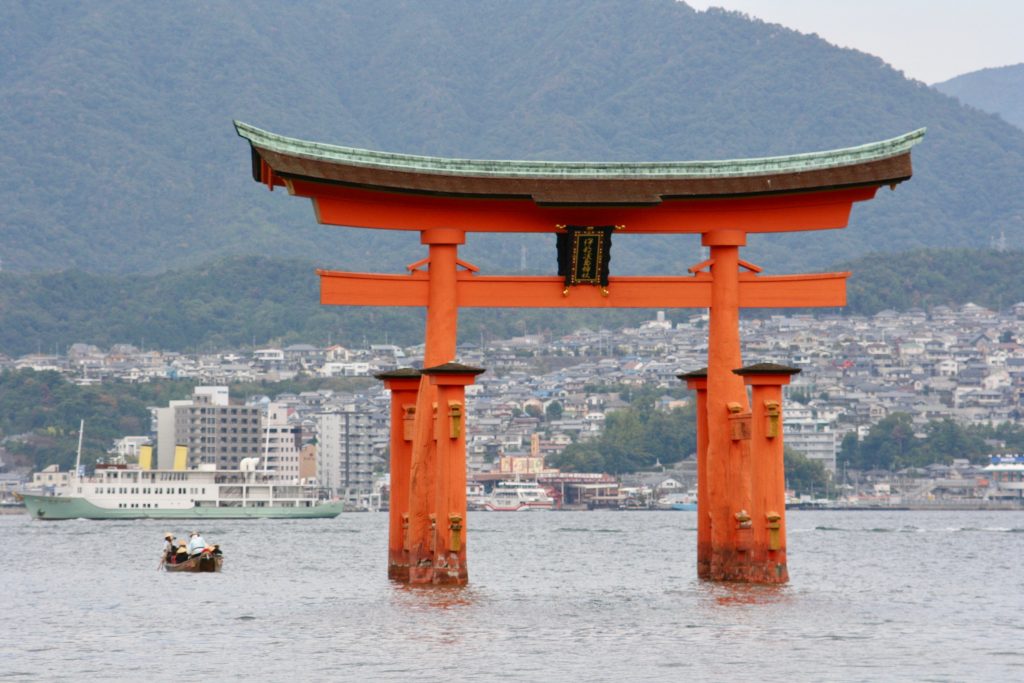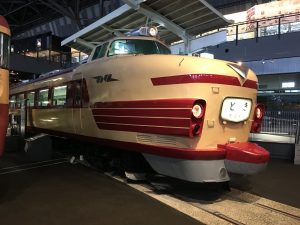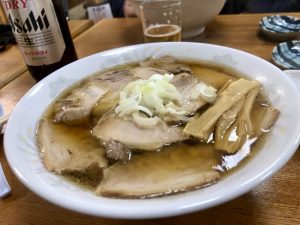Kure City
Beppu is considered one of the hot spring capitals of Japan, with the entire town’s identity based on the numerous public baths, hot spring hotels and resorts, and the volcanic pools called the 7 Hells. If in Kyushu, staying at a hot spring in Beppu is a must.

| The Good | The Not-So Good |
| Navel history museums | Limited options outside navel history |
| Stunning views of surrounding islands | Limited English support |
Kure City is a city located in Hiroshima Prefecture, Japan. It is situated on the western coast of the main island of Honshu and has a population of approximately 245,000. Kure City is recognized for its naval history and is home to the Kure Maritime Museum and the Kure Naval District. In addition, the city is known for its beautiful beaches and marine sports facilities.
What to do in Kure City
- Kure Maritime Museum: This museum is dedicated to the city’s naval history and features exhibits on the history of shipbuilding and the Japanese navy.
- Japan Maritime Self-Defense Force (JMSDF) Kure Museum dedicated to the history and traditions of the JMSDF featuring exhibits on the organization’s history
- Kure Naval District: This historic district is home to several landmarks related to the city’s naval history, including the Kure Naval Arsenal and the Kure Naval Base.
- Kure Port: This port is home to a number of restaurants, shops, and attractions, including the Kure Municipal Fruit Park and the Mariho Aquarium.
- Kyusan Mountain (休山) – known for its beautiful views and is a popular spot for sightseeing and hiking.
There is an excellent PDF created for tourists in English of the various spots in and around Kure City.
Kure Maritime Museum
The Kure Maritime Museum is a museum dedicated to the city’s naval history. It features exhibits on the history of shipbuilding and the Japanese navy, as well as interactive displays and hands-on activities. Admission to the museum is 500 yen for adults and 300 yen for high school students. Children under 15 and students with valid ID are admitted for free. The museum is open from 9:00 AM to 4:30 PM, with the last admission at 4:00 PM. The museum is closed on Mondays (unless Monday is a national holiday, in which case it is open and closed the following day), and from December 29th to January 3rd. Some exhibits and displays at the museum are available in English. To get to the museum from Kure Station, you can take the local bus or a taxi. The journey takes around 15-20 minutes. Alternatively, you can walk to the museum in around 30-40 minutes.
Kure Naval District
The Kure Naval District is a historic district in Kure City that is home to several landmarks related to the city’s naval history. The district is home to the Kure Naval Arsenal, which was an important shipbuilding facility during World War II, and the Kure Naval Base, which was one of the largest naval bases in Japan during the same period. The district is a popular destination for history enthusiasts and those interested in learning about the city’s naval heritage. It is a short walk from the Kure Maritime Museum, which is dedicated to the city’s naval history and features exhibits on the history of shipbuilding and the Japanese navy.
Japan Maritime Self-Defense Force (JMSDF) Kure Museum
The Japan Maritime Self-Defense Force (JMSDF) Kure Museum is a museum dedicated to the history and capabilities of the JMSDF, one of the three branches of the Japan Self-Defense Forces. The museum features exhibits on the history of the JMSDF, as well as displays of various ships and weapons used by the organization. Admission to the museum is free, and the museum is open from 9:30 AM to 4:30 PM, with the last admission at 4:00 PM. The museum is closed on Mondays (unless Monday is a national holiday, in which case it is open and closed the following day), and from December 29th to January 3rd. Some exhibits and displays at the museum are available in English. The museum is right next to the Kure Maritime Museum.
Kyusan mountain
Kyusan mountain is a popular destination for hikers and sightseers. It is particularly known for its beautiful views of the Seto Inland Sea and the surrounding islands, which can be seen from the observation point at the mountain’s summit at an elevation of 497 meters. The mountain also has a scenic hiking trail that offers additional views of the islands and passing ships. To reach Kyusan mountain, visitors can take the bus Kure Station to Miyahara 5-Chome and then start the hike from there. A reasonable route that takes you via the observation deck will take just over 1 hour, one way. It is not recommended to hike further along the mountain as access on and off is limited.
Access to Kure City
There are several ways to get to Kure City from Tokyo:
- By train: You can take the bullet train (Shinkansen) from Tokyo Station to Hiroshima Station, and then transfer to the local Sanyo train line to Kure. The total journey time from Hiroshima City is about 30 minutes.
- By bus: There are several long-distance bus companies that operate routes from Tokyo to Kure City. The journey time is around 8-9 hours.
- By plane: You can fly from Tokyo’s Haneda Airport to Hiroshima Airport, and then take a bus or taxi from the airport to Kure City. The total journey time is around 2-3 hours.
- By car: You can also drive from Tokyo to Kure City. The distance is around 350 kilometers and the journey time is around 6-7 hours, depending on traffic.
Keep in mind that the most convenient and quickest way to get to Kure City from Tokyo will depend on your specific circumstances and preferences. It is a good idea to compare the different options and choose the one that best suits your needs.
Places close to Kure City
etSETOra Tourist Train
Kure City
Onomichi City
The GoodThe Not-So GoodGreat walking route around historic cityNothing “spectacular” to see Onomichi City is famous for its mountain side temple and park, the numerous other temples and access to the famous Shimanami Kaido, which is a special 60km cycle route connecting the main island of Japan to the smaller…
Hiroshima City
The GoodThe Not-So GoodUnique surviving historyGreat, local food Hiroshima city is known around the world by anyone who has a passing knowledge of World War II history. You can delve into this history at your leisure. The city itself is a worthwhile place to visit even if you aren’t interested…
Miyajima Island
An Island off the coast of Hiroshima, accessible by ferry, is the location of Itsukushima Shrine, a World Heritage site. It is a popular tourist destination, famous for its “floating” gate (which is currently covered in scaffolding for repairs.When JapanTweet Tori Gate renovation travel cautionThe Tori Gate, a major draw…



